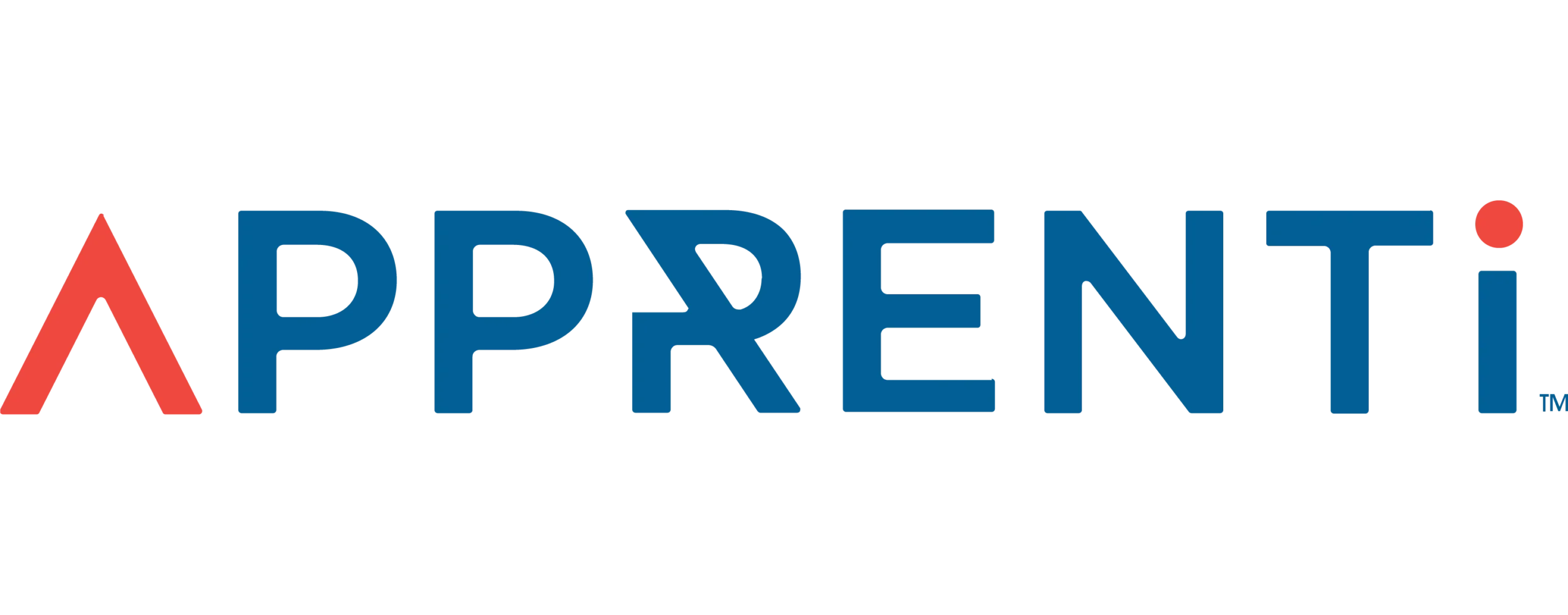Article Summary
- Implement robust internship tracking to identify and nurture future talent within your organization.
- Use digital tools and standardized processes to streamline documentation and ensure compliance for your internship programs.
- Define clear success metrics beyond simple completion to accurately measure skill development and program effectiveness.
- Leverage intern management technology to enhance communication, data analysis, and reporting for all stakeholders involved in your internships.
Want to Learn More About Your Registered Apprenticeship Opportunities?
BOOK A FREE CONSULTATION
Why Do Smart Internship Programs Matter Today?
Hey there! If you’re juggling multiple apprenticeship or internship tracks, you know how vital these programs are. But are you getting the most out of them? Smart internship programs, especially those with solid internship tracking, aren’t just a ‘nice-to-have’; they’re a strategic imperative for building a future-ready workforce. It’s about more than just giving young folks a peek into the corporate world; it’s about intentionally cultivating talent and closing that ever-present skills gap we’re all talking about.
Track progress with digital tools
Gone are the days of clunky spreadsheets and scattered notes for internship tracking. Modern programs leverage digital tools to monitor intern progress in real time. This means you can see who’s excelling, who needs a bit more support, and how skills are developing across the board. Think of it as having a clear dashboard for your talent pipeline. This shift not only makes life easier for HR executives like yourself but also provides a more transparent and engaging experience for the interns. They can see their growth, which is a huge motivator!
Build stronger talent pipelines
Internships are essentially extended interviews, wouldn’t you agree? A well-structured program with effective internship tracking allows you to identify high-potential individuals early on. These are the folks you can nurture and potentially hire, already familiar with your company culture and processes. It’s a fantastic way to de-risk new hires and build a loyal, skilled workforce from the ground up. We’re passionate about creating these pathways, helping young people find their footing without accumulating mountains of debt.
Measure program effectiveness
How do you know if your internship program is truly delivering value? Gut feelings don’t cut it. Effective internship tracking provides the data you need to measure program effectiveness. You can look at skill attainment, project completion rates, conversion rates to full-time hires, and even manager satisfaction. This data-driven approach helps justify the investment in these programs and allows for continuous improvement. For instance, progress monitoring measures can be useful for tracking change and development.
Create structured learning paths
Random assignments don’t lead to meaningful skill development. Smart internship programs feature structured learning paths, outlining clear objectives, skills to be learned, and experiences to be gained. This intentionality ensures that interns aren’t just busy, but are actively developing competencies relevant to their careers and your organization’s needs. It’s about providing real work assignments that are challenging and valuable. This structure also makes tracking progress more straightforward and meaningful.
Pro tip: Start by clearly defining the learning objectives for each internship role. When interns and managers know what success looks like from day one, tracking progress becomes much more focused and effective.
Let’s Talk About Modern Internship Tracking
So, we’ve established why smart internship programs are crucial. Now, let’s dive into the how, specifically focusing on modern internship tracking.
For HR executives managing diverse programs, moving beyond outdated methods is key to unlocking your interns’ full potential and overall internship strategy. It’s about creating a dynamic, responsive system that benefits everyone involved—the intern, the manager, and the organization as a whole. This isn’t just about oversight; it’s about fostering real growth, strengthening your talent pipeline, and making sure every internship experience becomes a purposeful stepping stone toward a great career. And when done right, it reflects your organization’s values and future vision.
At GoSprout, we understand the relationship between apprenticeship vs internship. We started with an apprenticeship management system, which made internship tracking easier by comparison.

Set clear performance metrics
What does success look like for an intern in your program? If you can’t answer that clearly, tracking performance becomes a guessing game. Modern internship tracking starts with defining clear, measurable performance metrics. These could include:
- Completion of specific projects or tasks
- Demonstrated proficiency in new skills
- Contributions to team goals
- Professionalism and initiative.
Document skill development
An internship should be a period of significant learning and skill acquisition. But how do you capture this growth? Modern tracking systems allow for meticulous documentation of skill development. This isn’t just about ticking boxes; it’s about creating a portfolio of evidence showing what the intern has learned and accomplished. This documentation is invaluable for the intern’s future career and for your organization’s talent assessment. It’s about making learning visible and tangible.
Enable real-time feedback
Annual or end-of-internship reviews are too little, too late. Modern internship tracking thrives on continuous, real-time feedback. This means regular check-ins, ongoing dialogue between interns and mentors, and the ability to adjust learning paths as needed. When interns receive timely feedback, they can course-correct, build on strengths, and feel more engaged in their development. This dynamic approach transforms an internship from a passive experience to an active learning journey. Think about how much more impactful it is to address a challenge or celebrate a win in the moment, rather than weeks later!
Pro tip: Schedule brief, weekly check-ins between interns and their direct supervisors. These don’t have to be long, formal meetings – even 15-20 minutes can make a huge difference in providing timely feedback and support.
Here’s How to Streamline Your Documentation
Alright, let’s get practical. If you’re an HR executive, the word “documentation” might bring to mind endless paperwork and compliance headaches, especially with multiple internship tracks. But it doesn’t have to be that way. Streamlining documentation for internship tracking is not just possible, it’s essential. With the right tools, you can reduce admin load, improve consistency, and free up time to focus on people, not paper.
When information flows smoothly, everyone benefits. Clear documentation keeps interns, managers, and HR aligned and ensures your programs run efficiently. Simplifying these systems is key to launching more scalable and effective apprenticeship and internship initiatives. If you’re deciding between models, it’s also worth exploring the unique value of apprenticeships and other work-based learning programs.

Implement digital reporting tools
This is a game-changer. Moving from paper-based or scattered digital files to a centralized digital reporting system can save an incredible amount of time and reduce errors. Imagine all intern evaluations, progress reports, and feedback logs in one accessible place. An Internship Management System (IMS) can minimize administrative overhead through features like document management and status tracking. For instance, the GoSprout Apprenticeship Management Platform is a SaaS, cloud-based tool that unites stakeholders and simplifies tracking OJT and related training, making compliance much easier.
Standardize evaluation processes
Consistency is key for fairness and meaningful data. Standardizing your evaluation processes across all internship programs ensures that all interns are assessed against the same criteria. This involves creating common templates for performance reviews, skill assessments, and feedback forms. This not only makes the evaluation process more objective but also allows for easier comparison of intern performance and program outcomes across different departments or tracks. It also helps in identifying best practices that can be shared.
Automate compliance tracking
Compliance with labor laws, educational institution requirements, or internal policies can be a major concern. Modern internship tracking systems can help automate aspects of compliance. This could include tracking hours, ensuring necessary paperwork is completed, or flagging potential issues before they become problems. Automating these checks frees up your HR team to focus on more strategic aspects of talent development.
Maintain detailed records
While we want to streamline, we also need to be thorough. Maintaining detailed, organized records is crucial for several reasons:
- Audits: Be prepared for any internal or external reviews.
- Program Improvement: Historical data can reveal trends and areas for enhancement.
- Alumni Tracking: Keep in touch with promising former interns for future opportunities.
- Legal Protection: Proper documentation can be vital if disputes arise. Good record-keeping is the backbone of a well-managed program.
Pro tip: Create a central digital repository for all internship-related documents and templates. Ensure access permissions are set appropriately so that managers, mentors, and HR staff can easily find what they need.
Let’s Define Success Metrics That Matter
When it comes to internship tracking, it’s easy to get caught up in just counting heads or checking off completion. But as an HR executive looking to build real talent, you know that true success lies deeper. What metrics really tell you if your internship programs are hitting the mark? It’s about moving beyond participation trophies and focusing on tangible outcomes that benefit both the intern and the company. This is where understanding the nuances between different types of work-based learning, like apprenticeships vs. internships, can also inform what you measure.
Establish progress benchmarks
Instead of waiting until the end of an internship to assess progress, establish clear benchmarks along the way. These milestones can be tied to specific skills, project phases, or learning modules. Tracking progress against these benchmarks allows for early intervention if an intern is struggling and provides opportunities to recognize achievements. It breaks down the overall internship into manageable, measurable stages. This approach boosts intern confidence and gives managers clearer visibility into performance and development.
For interns, seeing their progress in real time can be incredibly motivating. Tools like the GoSprout Apprentice App put this power directly in their hands, allowing them to understand requirements and confidently track their journey toward completion. This kind of visibility not only boosts accountability but also helps interns feel more engaged and supported throughout the program.

Monitor skill acquisition
This is a big one. The primary goal of many internships is skill development, so your tracking should explicitly monitor which skills are being acquired and to what level of proficiency. This might involve:
- Self-assessments by interns
- Manager evaluations of specific competencies
- Portfolio reviews or project demonstrations Focusing on skill acquisition ensures your program is delivering on its promise of practical learning and helps you identify future leaders based on capability, not just tenure.
Track completion rates (and what’s behind them)
Yes, completion rates are a basic metric, but they can tell a story. A high completion rate might indicate a well-structured, engaging program. Conversely, a low rate could signal issues with program design, mentorship, or intern selection. Dig deeper than just the number. Why are interns completing the program? Why might some not be? Understanding these factors is crucial for program refinement. It’s not just about finishing; it’s about finishing strong and with valuable experience gained.
Pro tip: Don’t rely solely on quantitative data. Incorporate qualitative feedback through exit interviews or surveys to understand the intern’s experience, what they valued most, and areas for improvement. This rich, anecdotal data often reveals insights that numbers alone can’t.
Here’s How Technology Transforms Tracking
We’ve touched on digital tools, but let’s really explore how technology is revolutionizing internship tracking for HR executives like you. If you’re still relying on manual processes, you’re likely feeling the strain. Technology isn’t just about doing the same things faster; it’s about enabling entirely new levels of efficiency, insight, and engagement in your internship programs. This is especially true as programs scale, whether for large enterprises or growing SMBs looking into apprenticeships and internships. The right tech stack can make a world of difference.
Deploy management software
Specialized internship or apprenticeship management software centralizes all aspects of your program. Think of it as a command center for:
- Onboarding new interns
- Assigning tasks and projects
- Tracking progress and skill development
- Managing evaluations and feedback
- Storing all related documentation securely This consolidation simplifies administration and provides a single source of truth. For instance, if you’re looking to enhance your programs with specific learning modules, GoSprout’s Course Development service can create custom courses that integrate seamlessly with such management platforms, ensuring that the training provided is directly trackable and aligned with program goals.

Connect stakeholder communication
Internship programs involve multiple stakeholders: interns, managers, mentors, HR staff, and sometimes educational institutions. Technology can bridge communication gaps by providing dedicated channels for updates, feedback, and collaboration. This ensures everyone is on the same page and can contribute effectively to the intern’s success. An internship management system is often a fundamental fragment of communication between all parties.
Analyze program data
With all your internship data in one place, technology allows for powerful analytics. You can identify trends, compare the effectiveness of different program tracks, measure ROI, and pinpoint areas for improvement. These data-driven insights are invaluable for making strategic decisions about your talent development initiatives. Instead of relying on anecdotes, you have concrete evidence to guide your efforts.
Generate instant reports
Need to show the impact of your internship program to leadership? Or provide progress updates to academic partners? Technology enables the generation of comprehensive reports with just a few clicks. This saves countless hours of manual data compilation and ensures that your reports are accurate and up-to-date. This is crucial for demonstrating value and securing ongoing support for your programs.
Pro tip: When evaluating internship management software, look for solutions that are user-friendly for all stakeholders, offer robust reporting capabilities, and can integrate with your existing HR systems if needed. Scalability is also key – choose a platform that can grow with your programs.
Bringing It All Together: The Future of Internship Management
As we look ahead, managing internship and apprenticeship programs effectively is more than just good HR practice; it’s a cornerstone of strategic workforce development. For HR executives, the future of internship tracking and management lies in creating a cohesive, tech-enabled ecosystem that nurtures talent from their first day as an intern to potentially becoming a valued long-term employee. It’s about building a system that not only tracks progress but actively contributes to growth and development, helping to close our nation’s talent gap. This is where understanding the full scope of what employers can achieve with well-managed programs becomes so powerful.
Integrate systems for seamless data flow
Siloed systems create inefficiencies and missed opportunities. The future involves integrating your internship management tools with other HR platforms (like your HRIS or ATS) for a seamless flow of data. This holistic view of talent allows for better decision-making and a more personalized experience for interns. Imagine an intern’s progress data automatically informing their potential full-time onboarding plan – that’s the power of integration.
Empower interns with self-service tools
Modern interns are tech-savvy and appreciate autonomy. Future-focused internship programs will increasingly empower interns with self-service tools. This could include mobile apps for tracking their own progress, accessing learning resources, and providing feedback. When interns take ownership of their development journey, engagement and outcomes often improve. This is a core philosophy behind our work at GoSprout, and you can see it in action by connecting with us on LinkedIn.
Foster a culture of continuous improvement
Internship programs shouldn’t be static. The data and feedback gathered through tracking systems should drive continuous improvement. Regularly assess what’s working, what needs adjustment, and how to support both interns and supervisors better. This approach keeps your programs relevant, effective, and responsive to change.
If you’re unsure where to start, services like GoSprout’s Workforce Planning & Consulting can help. From understanding available grants to designing better frameworks, expert guidance can set your program up for long-term success, even before implementing a tracking system.

Prepare for future workforce needs
Ultimately, effective internship management is about preparing for your organization’s future workforce needs. By identifying, nurturing, and tracking talent through your internship programs, you’re building a sustainable pipeline of skilled individuals who understand your company and are ready to contribute. This proactive approach to talent development is essential for long-term success.
Pro tip: Regularly solicit feedback not just from interns, but also from the managers and mentors involved in the program. Their insights are crucial for identifying practical improvements and ensuring buy-in across the organization.
Frequently Asked Questions
- Q: Why is internship tracking so important for HR executives?
- A: Effective internship tracking allows HR executives to identify and nurture talent, measure program ROI, ensure compliance, and build a strong pipeline of future employees. It moves programs from being a simple activity to a strategic talent development initiative.
- Q: What are the key components of modern internship tracking?
- A: Modern internship tracking involves setting clear performance metrics, meticulously documenting skill development, enabling real-time feedback, and leveraging technology for streamlined administration and data analysis.
- Q: How can technology help improve our internship programs?
- A: Technology, such as dedicated management software, can centralize program administration, improve communication among stakeholders, provide powerful data analytics for program improvement, and automate reporting and compliance tasks.
- Q: What kind of metrics should we focus on besides just completion rates?
- A: Focus on metrics like skill acquisition (specific competencies gained), progress against established benchmarks, quality of project work, and qualitative feedback from both interns and managers. These provide a more holistic view of program success.
- Q: How can we ensure our internship documentation is streamlined yet thorough?
- A: Implement digital reporting tools, standardize evaluation processes with templates, automate compliance checks where possible, and maintain detailed, organized digital records in a central repository for easy access and auditing.















